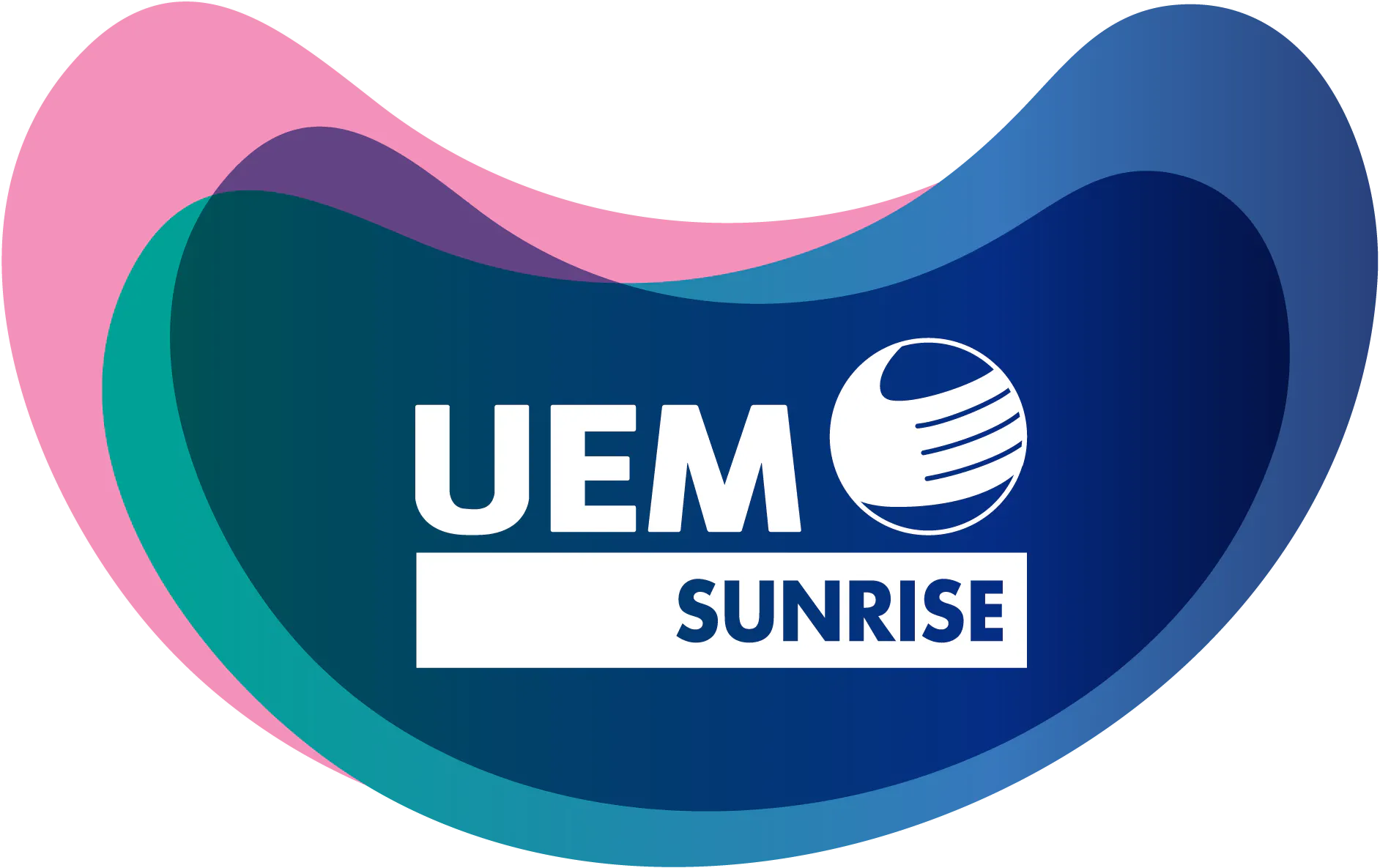Hope, healing and resilience as captured by Malaysian artists and photographers
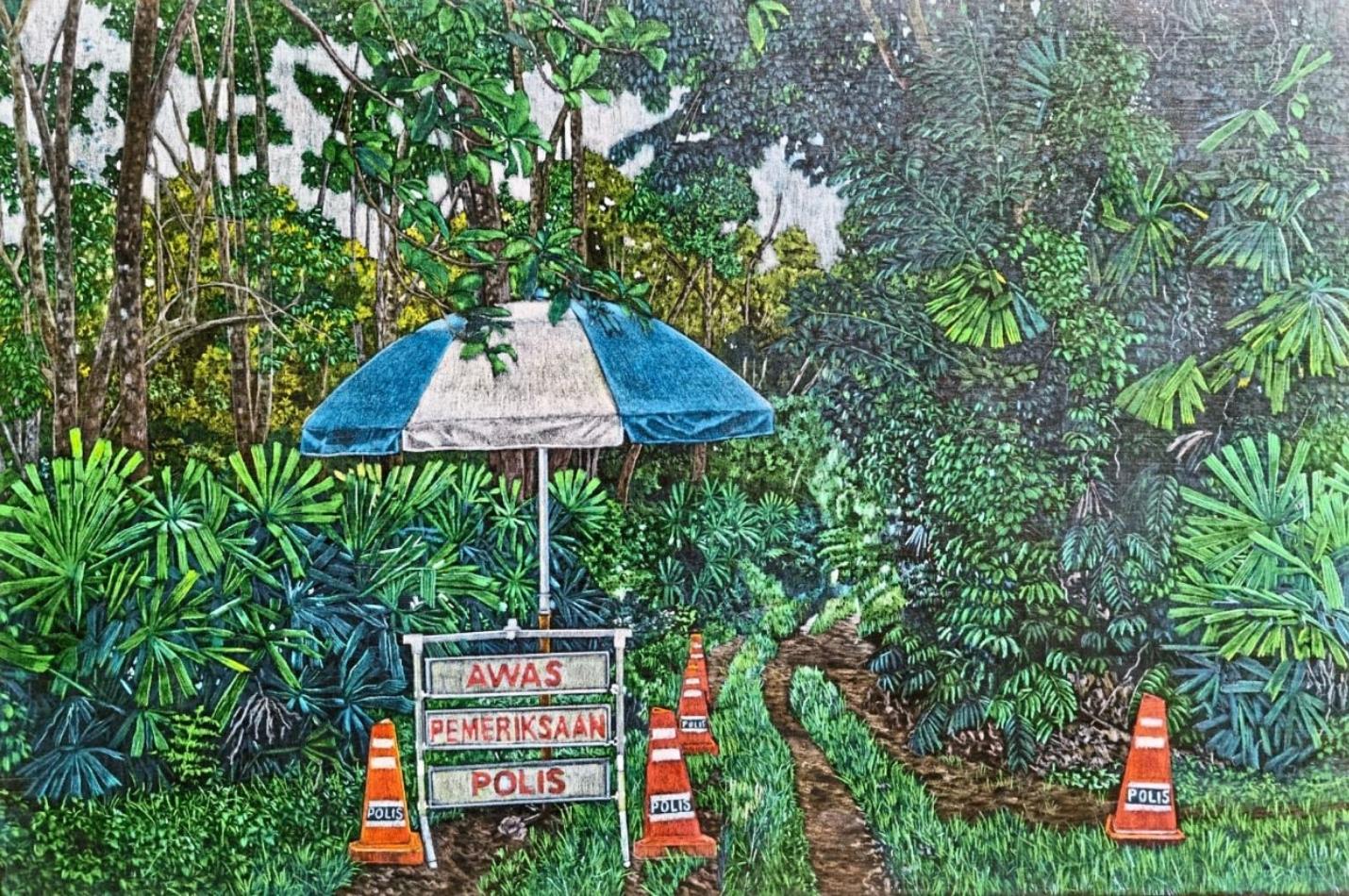
28 November 2021
There are many images, stories and phrases that we associated with the pandemic. Some phrases come and go, like “herd immunity”. Some things are here to stay, at least for a while: face masks, hand sanitiser, “Spanish Fly”.
The masses are embracing new norms, new habits: washing hands frequently, keeping a safe distance from others, shopping online.
Like many Malaysians, contemporary artist Fuad Arif turned to online shopping during the extended period of lockdowns, shop closures and home quarantine.
If not for the pandemic, he would probably not have a bottle rack that resembles French painter and sculptor Marcel Duchamp’s first “true” readymade sculpture from 1914, in his possession now.
This was one of his many purchases that was motivated by his impulsiveness to buy things online, a habit he cultivated during the pandemic.
“Buying stuff was a part of how I experienced and remedied my lockdown. Most of what I bought were household objects. Some were good, others ended up being overpriced and worthless. This bottle rack I got from Etsy resembles Duchamp’s 1914 piece, but it is not the same object nor is it even conceptually intended to be an ‘after Duchamp’. I consider it a ‘new object’, which is also not an art object, but placed in an art context (the gallery) as a real bottle rack,” says Fuad.
The original 1914 item is said to be mistaken as trash and discarded by Duchamp’s family, after he left France for the United States.
But it lives on in replicas housed in museums all over the world.
And now we have this version – one that was never meant to be related to Duchamp’s work – on display at Publika in Kuala Lumpur.
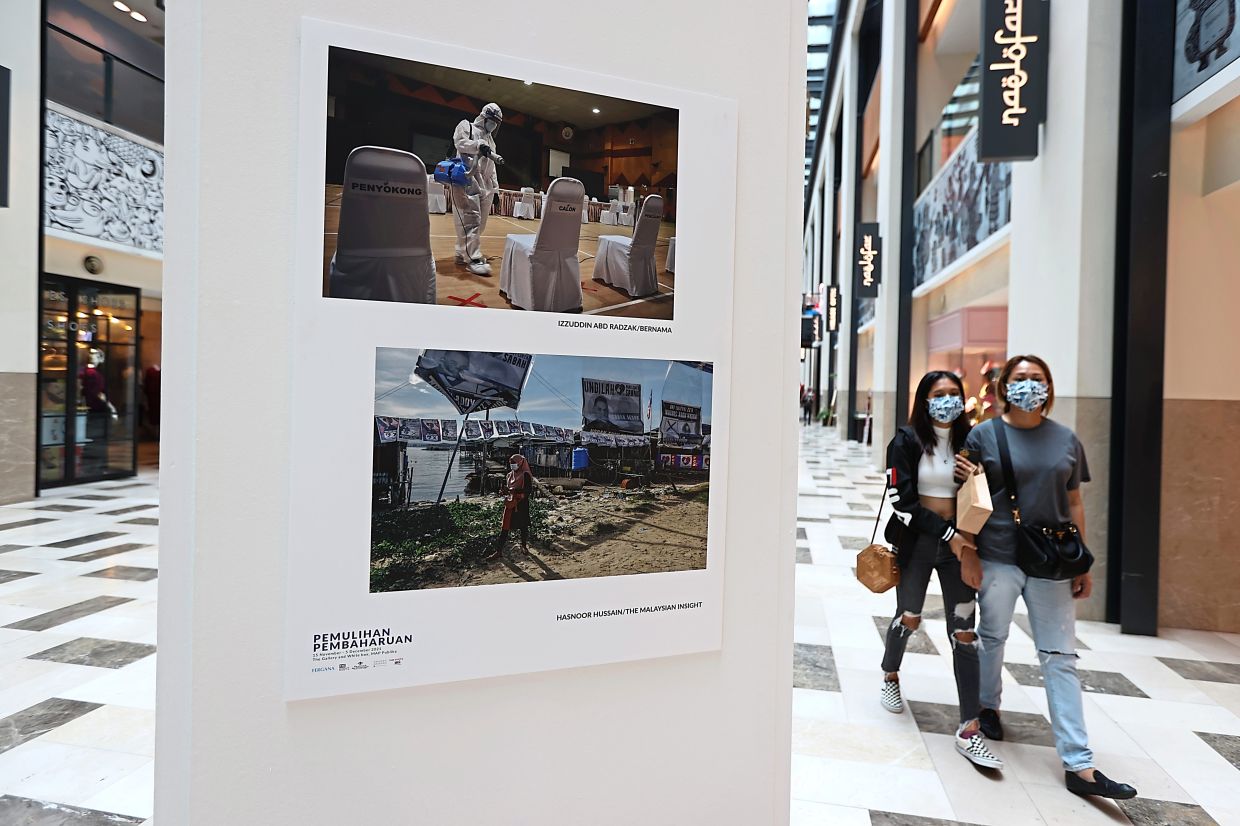
The Pemulihan: Pembaharuan exhibition at Publika in KL also features a section with works by photojournalists who covered the pandemic outbreak. Photo: The Star/Glenn Guan
Fuad’s Bottle Rack is one of the many works that is part of the Pemulihan: Pembaharuan exhibition, presented by Fergana Art and The Biddy’s, a photojournalist collective. The show comprises works from 89 participants from different backgrounds – visual artists, scientists, architects, poets, photojournalists and musicians.
Around 40 paintings, sculptures, installations and videos are displayed at the White Box gallery in Publika, while over 100 photography works are on exhibit on the mall floor (Level G2, Block B and C – red and blue zones).
There are also essays, poems, stories, prints, objects, music performances, social media commentary, visual diaries and personal notes that round up this compilation of collective visual and textual responses to the pandemic.
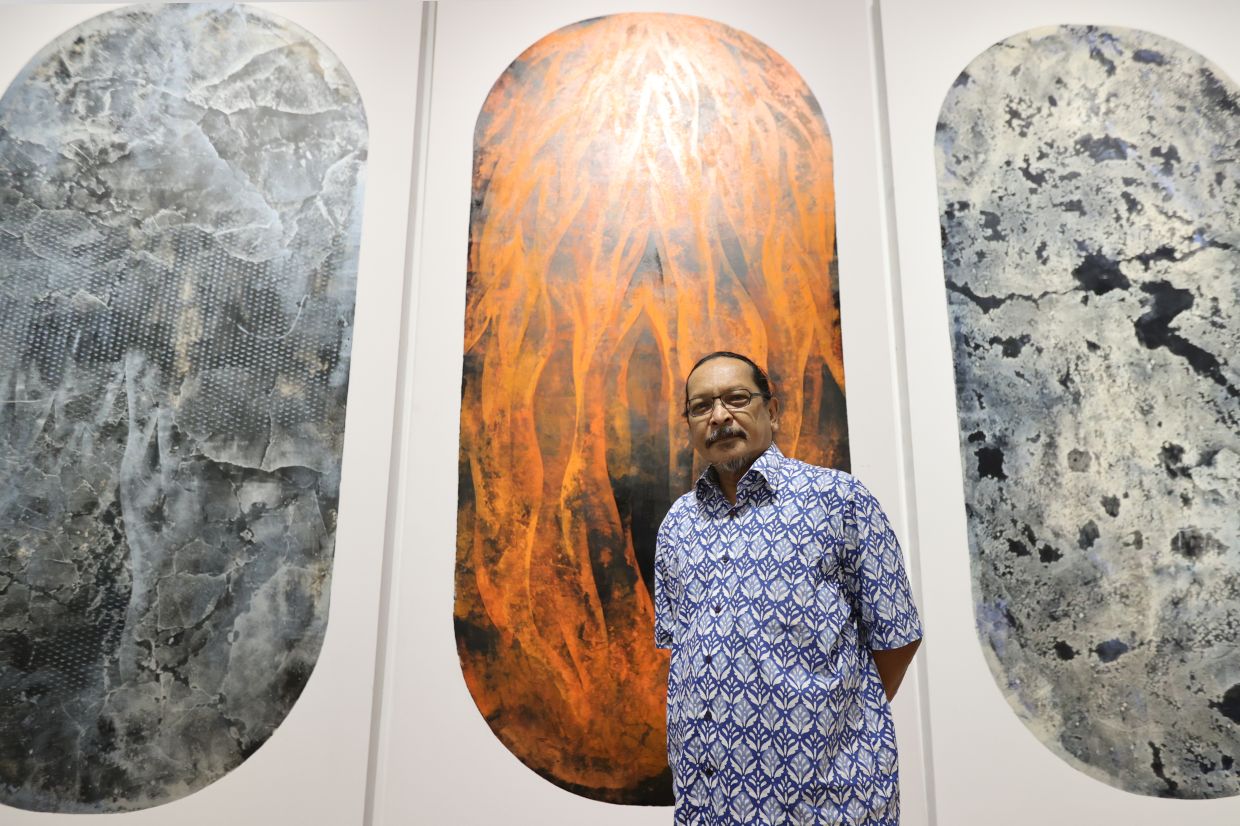
Jaafar Ismail, Fergana Art founder and show curator, standing next to Faizal Suhif's mixed media work 'Kapsul Meditasi (Puisi) at the group exhibition 'Pemulihan: Pembaharuan' in Kuala Lumpur. Photo: The Star/Glenn Guan
Pemulihan: Pembaharuan is the second edition of this project.
The inaugural exhibition, Bridging The Distance: Making Us Stronger, was held in June last year and focused on containment and the immediate response by leaders, agencies, institutions and people living in Malaysia.
“The bedrock of the first exhibition was photojournalism, a medium chosen as it is time-based and ‘real’. The show was energetic and the excitement was clearly evident. In this second exhibition, the tone is more sombre, with less visually arresting or ‘up-front’ imagery. I guess the process of recovery is more ‘ordinary’, portraying the ‘plaintive and flatness of daily lives’, reflecting how we make do with whatever is available to deal with the virus,” explains Jaafar Ismail of Fergana Art, who put this show together.
“An apt phrase here is likely, ‘fatigued, yet resilient’, though some simmering anger and disappointment is evident here. Still, it is rational that we reduce the show’s ‘temperature’ and encourage a more contemplative response, while maintaining the documentary spirit. Hopefully some kind of balance is achieved for this exhibition,” he adds.
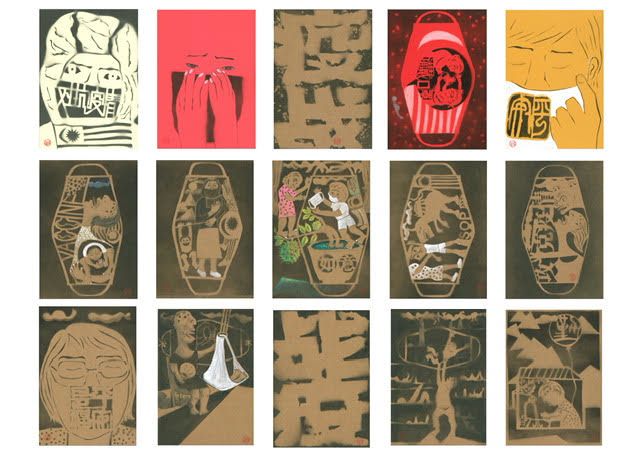
Chan Thim Choy's 'M Sejahtera' (mixed media, 2021). Photo: Fergana Art
The exhibition line-up gathers familiar names, returning favourites, curveball picks and newcomers. The cast, if we are allowed to celebrate diversity, includes Wong Hoy Cheong, Haslin Ismail, Samsudin Wahab, Amron Omar, art collective Pangrok Sulap, Kamal Mustafa, Faizal Suhif, Tengku Sabri Ibrahim, Syed Bakar Syed Salim, Tan Nan See, Megan Wonowidjoyo and the Digit Collective (a group of individuals from varied technical backgrounds).
Life after the storm
In Pemulihan: Pembaharuan, the scope of chronicling this historic period is extended to a broad range of art forms, as he believes that a multidisciplinary approach in art-making and exhibiting is a way of democratising art forms.
The result is a varied mix of works, ranging from quietly contemplative paintings to unexpected surprises.
For instance, Kaisu Koski’s prototype HUG, made of recycled air cushions, is a pneumatic garment that creates the sensation of a hug without requiring the presence of another person. It is the first prototype in a project exploring artificial empathy.
“The Covid-19 pandemic has highlighted social distancing as part of disease prevention, especially in the absence of vaccines in 2020. One of the primary gestures in expressing love and care, a hug has now become a potential health hazard, leaving many of us deprived of the human touch,” writes Koski in her statement on HUG.
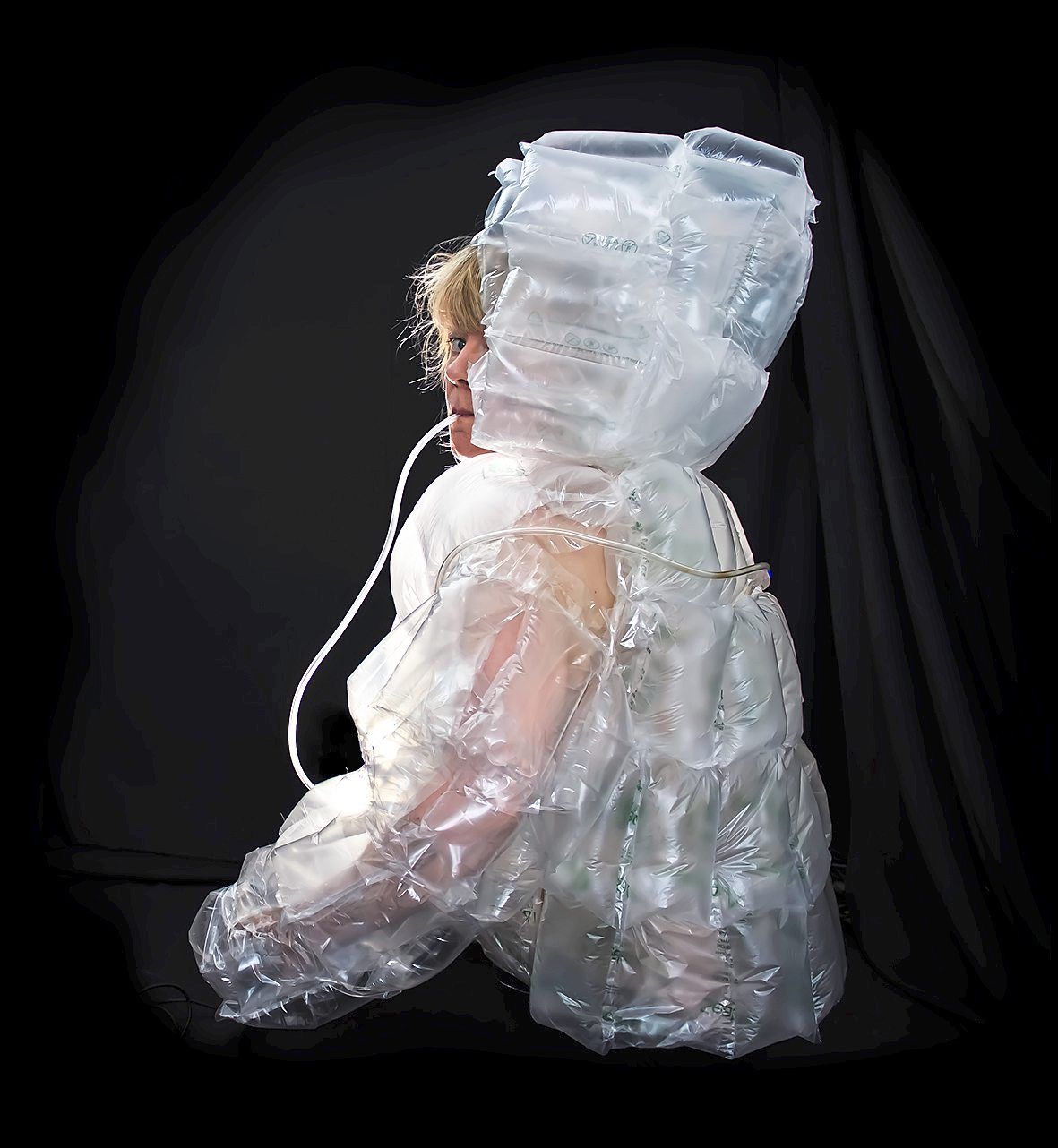
Koski’s 'HUG' (photographic print on Hahnemuhle Museum Etching Paper, 2020). Photo: Fergana Art
“HUG is inspired by ‘hugging’ garments, used in so-called deep-pressure therapy, imitating the structure of embodied human empathy. In pandemic times, breath is seen as a biohazard, a cloud of pathogenic aerosols that needs to be contained.
“Besides offering relief from isolation and lack of affective touch, the piece evokes questions about breath and its multiple meanings in connection with others and mental well-being,” she adds.
Many images on display here strike a chord in viewers, like photojournalist Kamal Sellehuddin’s photo of a man wearing personal protective equipment saying his last goodbye to a relative who died from Covid-19.
“This is the closest a loved one can get to saying their farewells to the casualties of Covid-19. Rigorous protocols have been introduced following the worldwide pandemic. Funeral practices for deaths resulting from Covid-19 are especially strict. While only a limited number of family members are allowed to be present, they are not able to view or touch the body of the deceased. The protocols dictate that immediately upon death, a Covid-19 body be wrapped in an airtight bag and placed directly in a sealed casket,” he says.
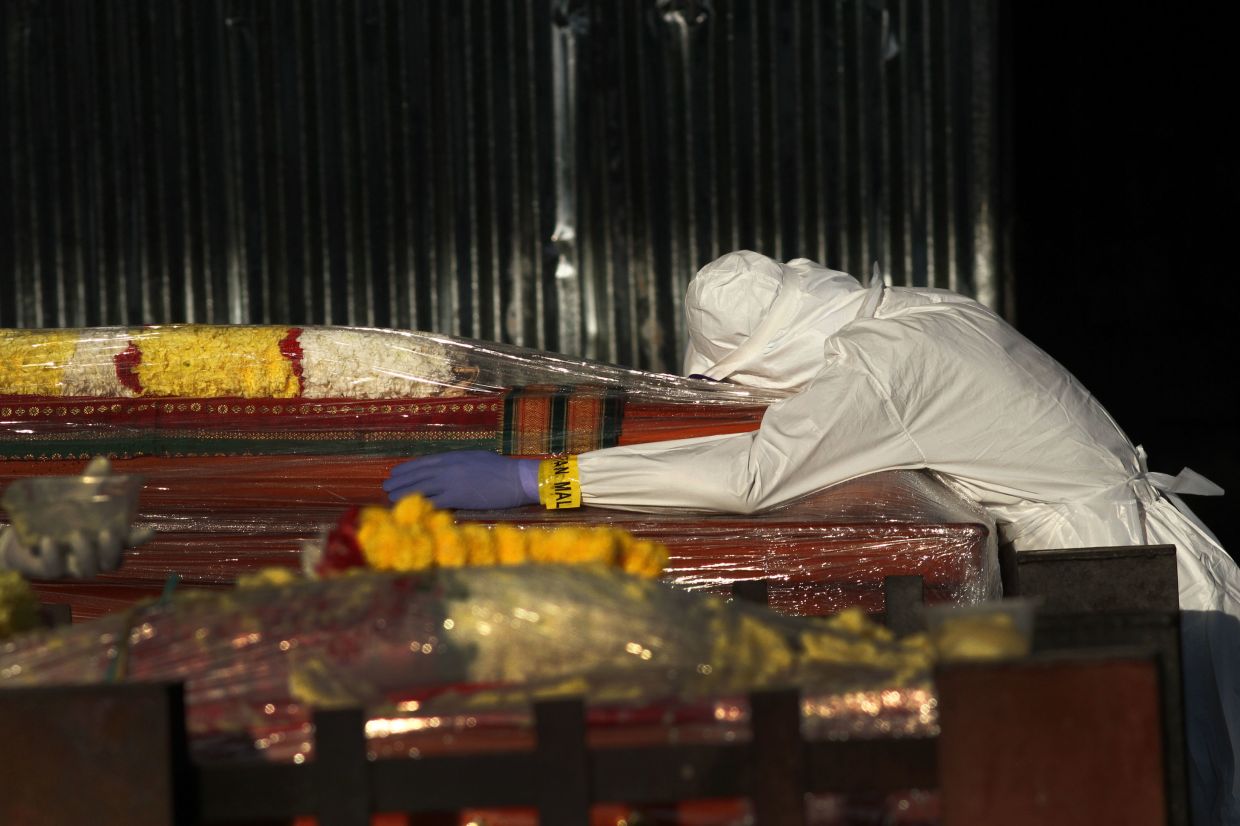
Photojournalist Kamal Sellehuddin's photo of a man wearing personal protective equipment saying his last goodbye to a relative who died from Covid-19 at a Hindu crematorium in Kuala Lumpur. Photo: Kamal Sellehuddin
In Syafiq Mohd Nor’s Road Block Jalan Tikus, he captures the “new everyday” during the lockdown based on roadblocks and diversions in his hometown of Kedah.
“Because of the lockdown and ensuing roadblocks, I found it difficult to go to the usual places to buy fertiliser. Even the ‘jalan tikus’ routes were closely monitored by the authorities. This sight is what this artwork captures. I remember the people in my kampung lamenting that they even encountered roadblocks on their way to tap rubber.
“It is not a very pleasant situation but it is what we all have to do in order to reduce our case numbers,” says Syafiq.
Pemulihan: Pembaharuan, as the name suggests, zooms in on recovery, renewal and a brighter tomorrow.
Perspectives and processes
The exhibition is part of an ongoing project to document, chronicle and publish a visual and textual narrative of the pandemic in Malaysia.
“The project won’t end here. It is founded on the idea espoused by the late Ismail Zain – that so much of South-East Asian history is founded on orality and that the role of artists is ‘to observe, record, provoke and invoke’ in their relationship with society and nature,” says Jaafar.
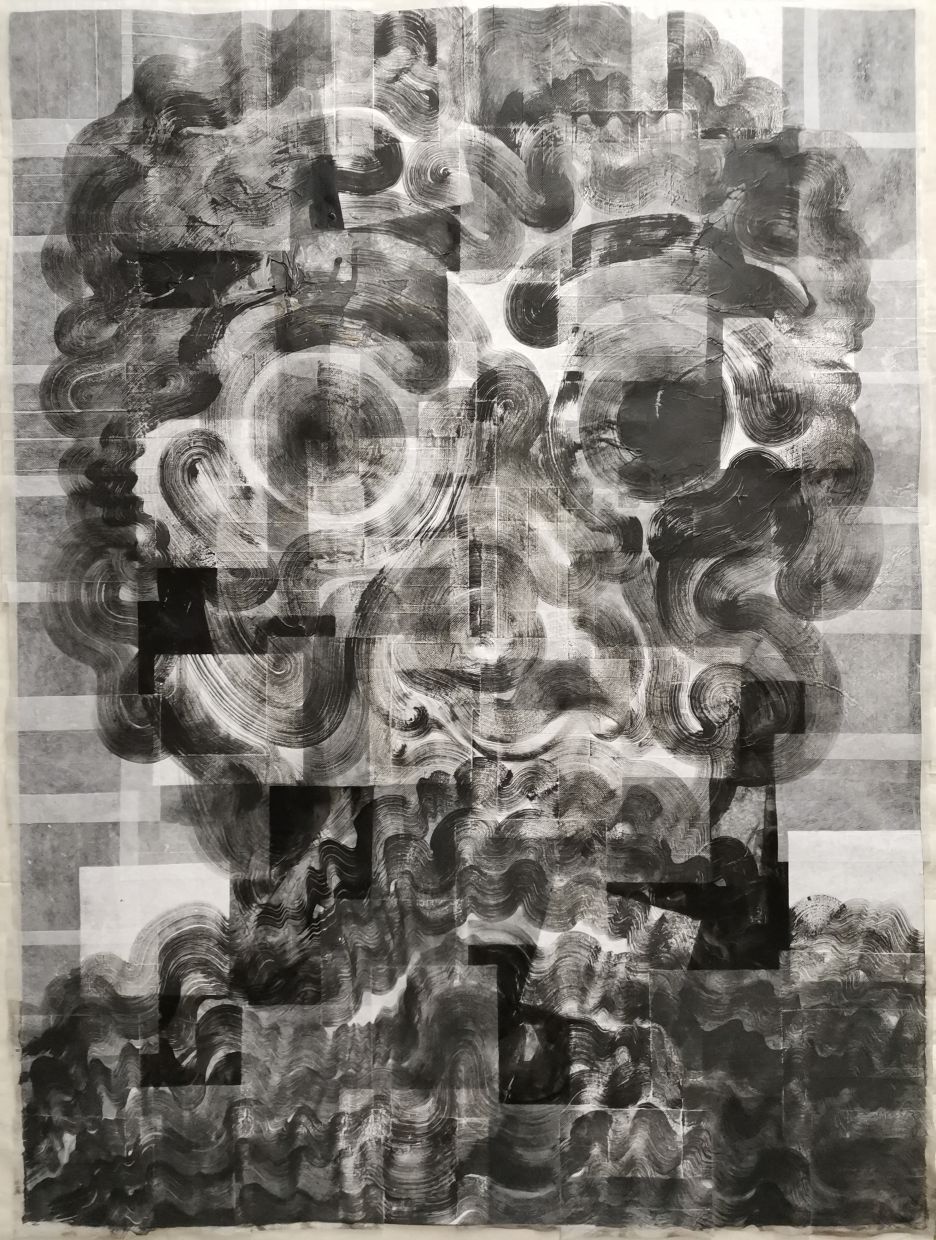
Haslin Ismail's 'Quietly Creeping' (Indian ink on three-ply collage on paper, 2020). Photo: Fergana Art
“This is a way for us to respond in a modest way, through visuals, texts and performances. The show doesn’t pretend to be conclusive. It is open-ended. Yet, the viral attack on a global scale offers pivotal opportunities to change, be it personal or societal. And recovery is a process. There is no definitive end and humanity will have to accept the endemic nature of the virus,” he adds.
The fact that Pemulihan: Pembaharuan is being shown in a gallery and a mall walkway gives it a chance to attract art lovers and curious bystanders.
If anyone were to say the show is rojak, with its mish-mash of art forms and a presentation of multiple perspectives on the pandemic and the show’s theme, this curator doesn’t mind in the least.
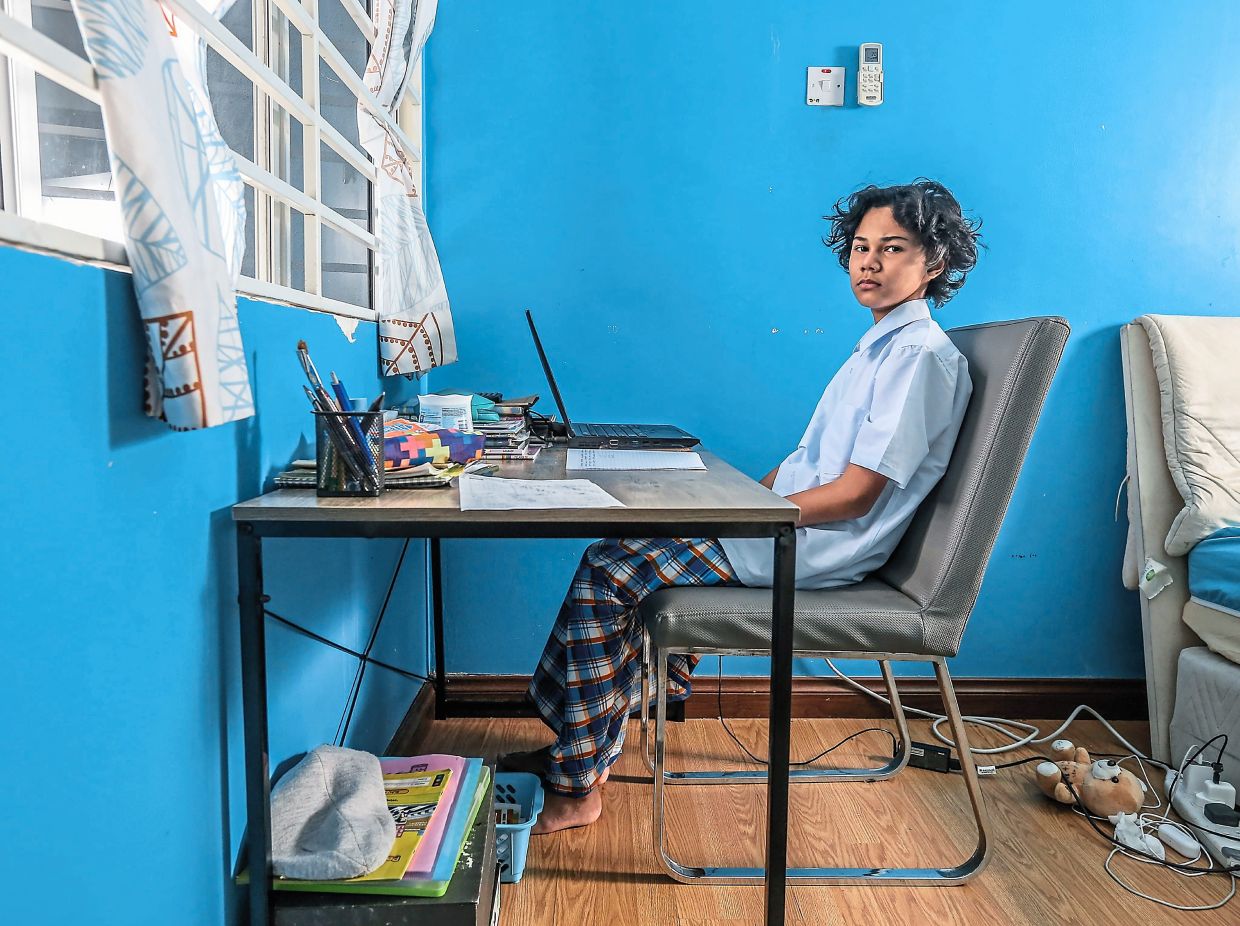
Osman Adnan’s photograph captures the home-based teaching and learning programmes for students all over Malaysia, when schools were closed during the pandemic. Photo: Osman Adnan
After all, this project is a work-in-progress, open-ended and “somewhat inconclusive” take on the pandemic situation – which remains fluid with ever-changing recommendations to deal with it.
It is an everyman exhibition, just like how the pandemic affects everyone in varying degrees.
“Hopefully, dialogues will emerge from this exhibition, however unstructured those may well be. I will be the happiest curator should the proverbial ‘Mak Cik Kiah’ be affected by the show,” says Jaafar.
Pemulihan: Pembaharuan is on until Dec 5 at The Gallery and White Box at Publika, Kuala Lumpur. Opening hours: 10am to 10pm. More info: Fergana Art.
Source: The Star
More from Media Highlights

Allevia Mont’Kiara redefines privacy and exclusivity
28 November 2021
